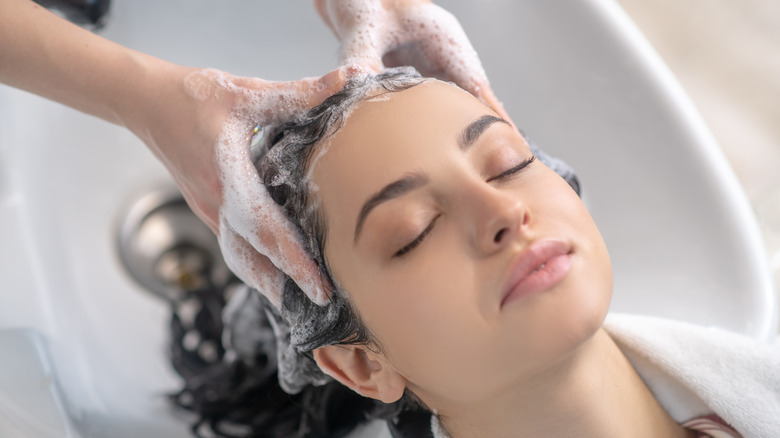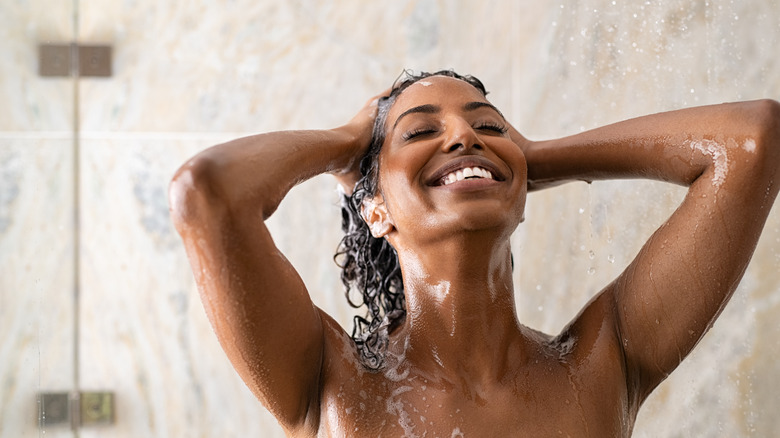Why You Shouldn't Use Shampoo After Its Expiration Date
Until you find the brand that perfectly caters for your hair type, you'll probably find your bathroom full of dozens of different shampoo bottles. Before attempting to try yet another product, you're most likely thinking that it's better just to use up the ones you've collected over the years rather than chancing it with another formula.
But like many other beauty products, shampoo can go out of date. "Most shampoos will last for 18 months after being opened and will be marked with a PAO (period after opening) on the label," Vince Spinnato, cosmetic chemist and founder of TurnKey Beauty Inc., told Real Simple. "If the bottle has never been opened, it will expire three years from the date of purchase."
This PAO is marked in months, and the most common shampoos expire in either 12, 18, or 24 months. But if you aren't sure exactly how long the bottle has been open for (or how long you've kept it), the shampoo itself can give you some clues. "Expired shampoo will eventually start to make physical changes," Spinnato explained, mainly in the "color, texture, and smell."
If you're not so bothered by its appearance or smell, expired shampoo can actually wreak havoc on your scalp if you're not careful.
Expired shampoo can 'undergo a chemical change' that can irritate your scalp and skin
According to Gina Rivera, founder of Phenix Salon Suites, expired shampoo can have a direct result to your scalp, leading to itching and irritation. "Expired products undergo a chemical change," Rivera explained to Healthline, "which means they're no longer effective at a high level." And if the shampoo you're using is organic or sulfate-free, this can often result in a shorter shelf life. "This is due to the lack of preservatives and the addition of more health-based ingredients," she said.
If you don't experience irritation from the expired shampoo, you will notice that the result it once had on your hair will have all but disappeared. Essentially, you're putting something in your hair that is literally doing nothing to it. And on the rare occasion, according to Style Craze, there could also be some "bacterial or fungal growth invisible to the eye" going on in there, which can also result in irritation on your scalp and skin. Yikes!

